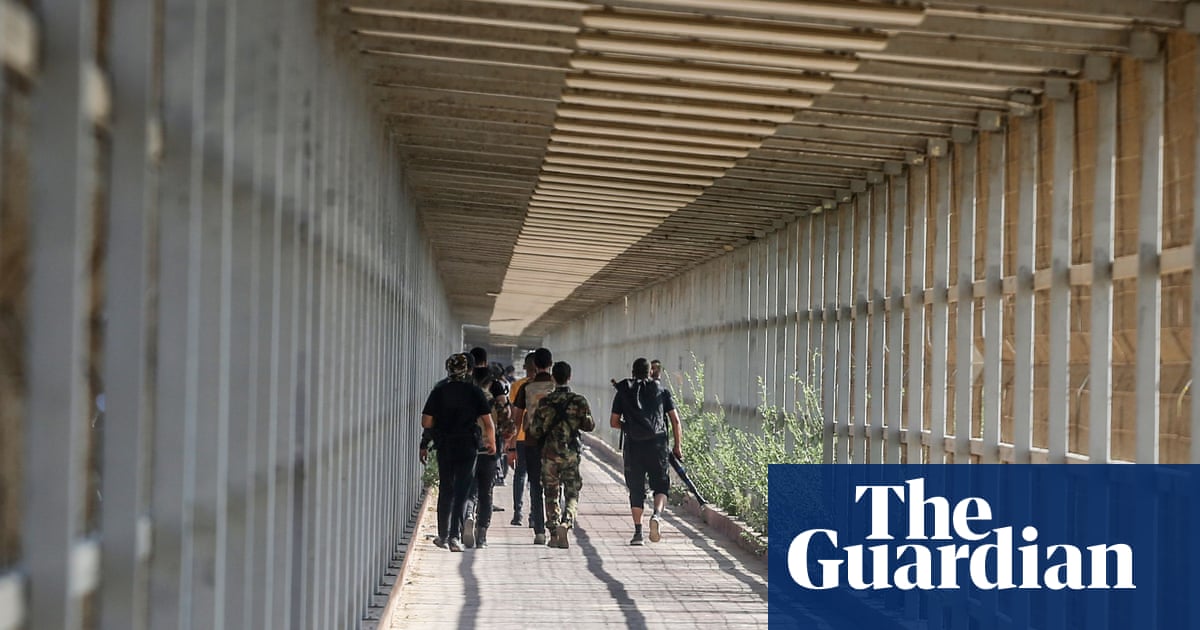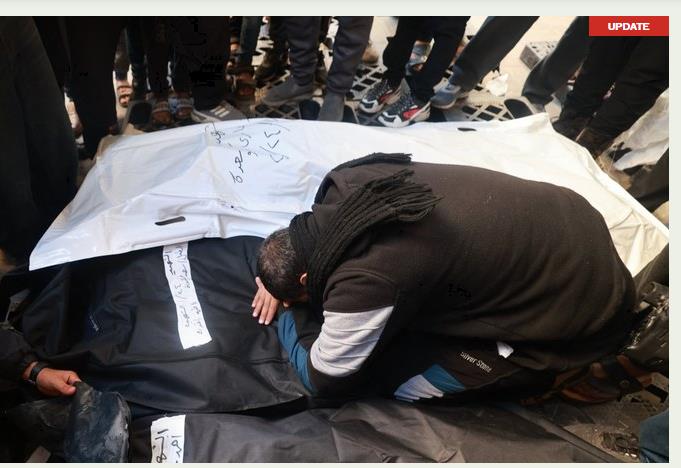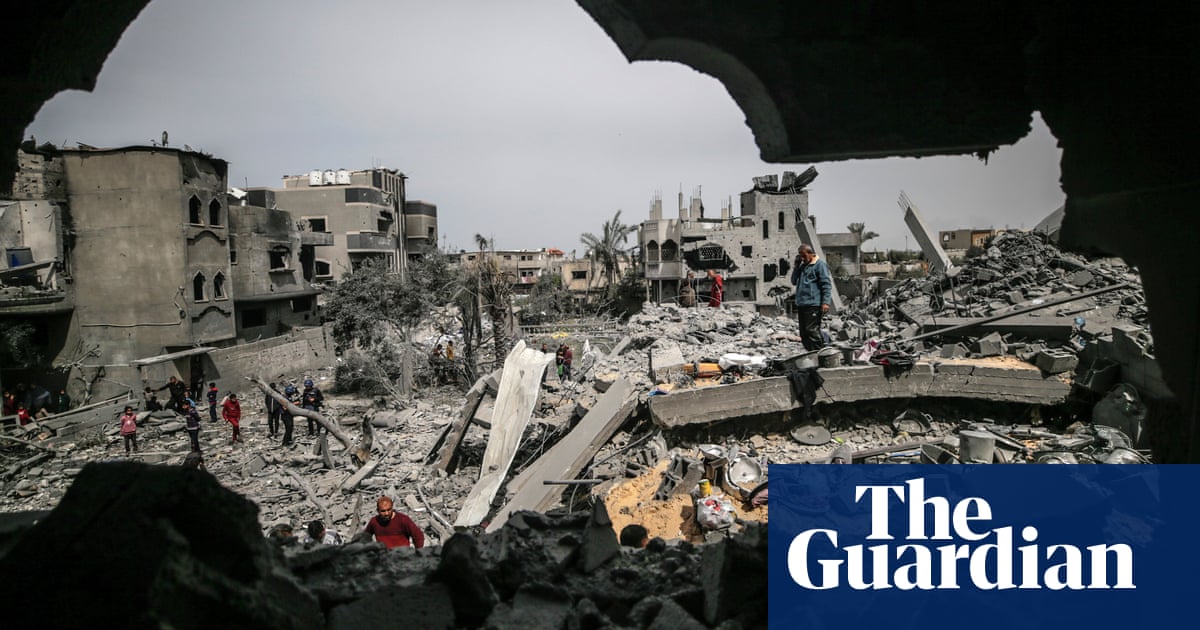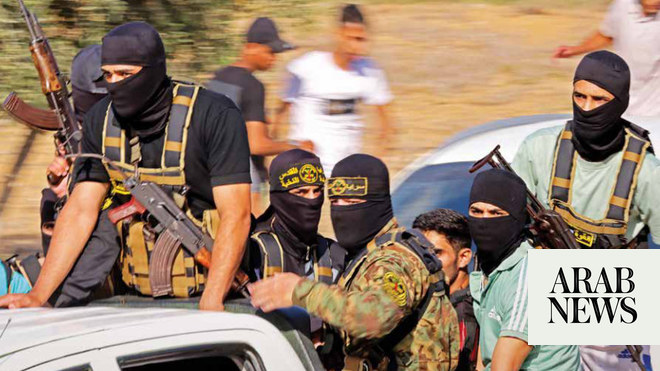
The Hamas assault on the Erez crossing, the looming symbol of Israel’s security infrastructure at the far northern end of the Gaza Strip, was indicative of what would come at other key locations.
A maze of rooms, populated with cameras and hi-tech scanners, double “tiger trap” doors all overseen by Israeli officials who deliver commands by loudspeaker, it is also a surveillance and communications hub, set into the high concrete wall that guards that part of Gaza.
Launched not long after daybreak on Saturday, Hamas’s attack on the crossing was as sudden as it was deadly, captured in video shot by the Islamist militants and posted online.
Beginning with a detonation from what appeared to be an anti-tank guided missile, members of Hamas’s special forces – Nukhba – quickly moved to secure entrances to the complex and to the access gate used by the Israeli military to enter Gaza during incursions, engaging Israeli forces in their watchtowers set into the wall.
In one shot a body can be seen lying on the ground in a concrete-lined tunnel. The surprise was total.
The aim of militants at Erez and other key locations along the Gaza border, as has become clear since Hamas launched its murderous rampage through southern Israel, was to decapitate the ability of Israel’s security forces to communicate with each other.
Videos posted to Hamas social media sites showed the militants moving quickly to engage Israeli vehicles that could stand in their way, including the apparent disabling of a tank hit by a munition dropped from a drone near the border fence.
On motorbikes, by car and on foot, bristling with weapons, a first wave of 400 Hamas militants poured across the border into Israel at the 15 points where they had breached the security barrier.
And in the space of a few hours, a wall and fence system costing billions of dollars to build, and designed to prevent being tunnelled under, equipped with a vast array of cameras and motion sensors, had been well and truly breached.
As the minutes ticked by more waves of Hamas militants moved with bulldozers to widen the gaps for larger vehicles including four-wheel drives, pickup trucks and motorbikes to pour across, tasked with attacking 22 separate locations inside Israel.
As has become clear in the days since the attack, Hamas had spent months if not years gathering intelligence on Israeli operations along the border, perhaps including during the Gaza border protests four years ago.
It had identified the vulnerabilities in the fence, not least the gates along the border and Israeli patrol patterns. It appears to have known which areas were being effectively monitored and which were not.
In all likelihood Hamas military planners had realised that the border and all its technology looked largely in a single direction – into Gaza. Once they had smashed through, they would be able to move more freely on their mission to murder and kidnap Israelis, most of them civilians.
While details remain scant over what Israeli security forces have established about the planning of the attack, some sources have speculated that Hamas’s operational security may have been so tight that even some members of its political leadership may have been kept out of the loop.
Participants in the assault, it has been suggested too, may have been trained without knowing until the last minute what their objectives were, including – according to one report – in a mock Israeli community where they practised going house to house.
Late on Monday a member of Hamas’s exiled leadership told the Associated Press that the attack was planned by around a half dozen top commanders in Gaza and that even the group’s closest allies were not informed in advance about the timing. “Only a handful of Hamas commanders knew about the zero hour,” said Ali Barakeh.
The attack was masked by a highly effective miasma of operational deception.
“Hamas gave Israel the impression that it was not ready for a fight,” a security source told Reuters.
“Hamas used an unprecedented intelligence tactic to mislead Israel over the last months, by giving a public impression that it was not willing to go into a fight or confrontation with Israel while preparing for this massive operation.”
Others were more blunt, suggesting a system and conceptual failure regarding Hamas that went far beyond intelligence-gathering.
“We were living in an imaginary reality for years,” one senior reserve officer told Haaretz.
“We became over-reliant on the sophisticated underground barrier, on technology. We convinced ourselves that Hamas is deterred and frightened, and that we’ll always have intelligence warnings in time. We thought we knew how to analyse their intention and thoughts. Sobering will be difficult.”
If Hamas’s effort to disrupt Israeli communications was deliberate, the impact – either by luck or judgment – was exacerbated by the blindsiding of the Israeli security forces.
The scale of the attack, which opened with a barrage of 2,500 rockets and involved attempted boat and paraglider landings to the north of Gaza, the use of drones, and breaches along the entire length of the wall, suggests the assault was designed to confuse and overwhelm.
After the breach, large groups of Hamas fighters quickly moved on several military bases on the far side of the border, apparently aware of their location, layout and the best approach routes to avoid detection.
A measure of its grim success was provided to Israel’s Channel 13 news in a leaked quote from an interrogation of a Hamas militant who participated in the massacre.
“It was five hours before they fired at us,” he said. “We were ready with 1,000 fighters, we breached the fence in 15 places.”
Among those Israeli forces who rushed to the fighting were special forces troops from the Shaldag Unit, whose commanders were alerted to the first attacks against communities along the border and who scrambled to get to the fighting by whatever transport was available.
In one of the first interviews with an Israeli unit commander involved in the fighting, published in Monday’s Jerusalem Post, a special forces colonel identified only as B described being told of the Hamas incursion within half an hour, arriving at the kibbutz of Be’eri by helicopter an hour and a half later, and fighting at that kibbutz for five hours before being redeployed to the effort to retake the Hamas-occupied Re’m military base.
One of the world’s most technologically advanced militaries was stretched almost to breaking point in only for a few hours. It was long enough, however, for Hamas to pursue its massacre.











